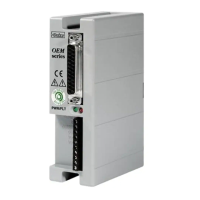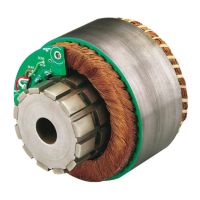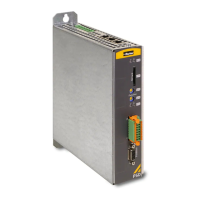Setting up Compax3
C3I10T10
192-120100 N16 C3I10T10 - December 2010
4.4.3. Load identification
Principle
In this chapter you can read about:
.........................................................................................................................126
Boundary conditions ......................................................................................................126
Process of the automatic determination of the load characteristic value (load identification)127
Tips ................................................................................................................................128
Automatic determination of the load characteristic value:
of the mass moment of inertia with rotary systems
of the mass with linear systems
4.4.3.1 Principle
The load characteristic value is automatically determined.
For this it is necessary to excite the system additionally with a signal (excitation
signal = noise).
The excitation signal is fed into the control loop. The control loop dampens the
excitation signal. Therefore, the superimposed control loop is set so slowly by
reducing the stiffness, that the measurement is not influenced.
A superimposed test movement is additionally possible. This helps to eliminate
possible mechanical effects such as rubbing caused by friction.
4.4.3.2 Boundary conditions
If the control is instable before the beginning of the measurement, please reduce
the stiffness (in the optimization window at the left bottom)
The following factors can disturb a measurement:
Systems with high friction (e.g. linear actuators with sliding guide)
Here, the systems where the static friction is considerably higher than the kinetic
friction (slip-stick effect) are especially problematic.
Systems with significant slack points (play)
Systems with "too light" or susceptible to oscillation bearing of the total drive
(rack).
Formation of rack resonances. (e.g. with gantries,...)
Non constant disturbance forces which influence the speed development. (e.g.
extremely strong slot moments)
The effects of the factors one to three on the measurement can be reduced by
using a test movement.
Caveat emptor (exclusion of warranty)
Due to multiple possibilities for disturbing influences of a real control path, we
cannot accept any liability for secondary damages caused by faultily determined
values. Therefore it is essential to verify all values automatically determined before
loading them into the control loop.

